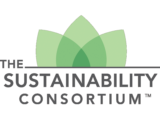Zero Waste
Waste is a product of inefficiency, and inefficiency is costly.
Attention to waste generated across the supply chain is growing. Simply put, waste is a product of inefficiency, and inefficiency produces environmental and business costs.
Every year, nearly half of food in the U.S. goes uneaten. The majority (85 percent) of this waste occurs downstream by the consumer, businesses, and homes. Current recovery efforts are unsupported and unable to prevent nearly all (95 percent) of the food waste that ends up in landfills and contributes to rising greenhouse gas emissions.
Like most foods, everyday items we consume come wrapped in packaging. This packaging, while intended to protect the product inside, contributes to one of the greatest environmental and health issues we face today: plastic pollution. It is estimated that only 9 percent of plastic waste is recycled properly, while the rest is sent to landfills or gets dispersed in the environment. Virgin packaging can also contain toxic chemicals, which can persist in the recycling stream and in the environment.
EDF and other NGO experts have collaborated to provide cross-cutting solutions and best practices for packaging and food waste prevention across supply chains. Many zero-waste strategies require engaging along the supply chain. Look through the categories below to find the solutions for your biggest waste challenges.
Continue Reading

Featured Content
Explore Zero Waste
Food Waste
Food waste includes any food substance lost or discarded across the supply chain. Learn more about the economic and environmental impacts of food waste and the innovative solutions companies around the world are implementing today.
View All Food Waste ResourcesPackaging
Learn more about the environmental, economic, and health impacts of packaging waste and the innovative solutions companies around the world are implementing today.
View All Packaging ResourcesEnd-of-Life
The majority of environmental damage from packaging and food waste occur at disposal. Learn more about the simple and innovative solutions to reduce impacts at a product’s end-of-life.
View All End-of-Life ResourcesProduct Design
Learn how product design flaws are a leading contributor to food and packaging waste across the supply chain and the innovation behind its improvements.
View All Product Design ResourcesMeasuring & Reporting
New technologies and methodologies are making data collection, analysis and sharing simpler, faster and more effective. Learn how measuring and reporting is imperative to reducing waste across your supply chain.
View All Measuring & Reporting ResourcesStakeholder Engagement
Understanding the motivations of different groups involved in your supply chain is a challenge, but can go a long way when showing how your zero-waste goals are relevant and beneficial to them.
View All Stakeholder Engagement ResourcesPolicy
Learn how progressive policy measures can provide the adequate infrastructure necessary for waste reduction across the supply chain.
View All Policy ResourcesBusiness Case
Building the business case for your sustainability plan is a crucial step for creating internal buy-in and unlocking the necessary resources to implement your plan.
View All Business Case ResourcesWhere are you on the sustainability journey?
When it comes to corporate sustainability, companies usually fall into three categories — beginner, “middle-miler” and leader. Our “Engage” section will help companies get informed on the issues, understand the landscape (both internally and externally) and start assessing areas of opportunity. Those who are in the middle miles of implementation — that nitty gritty period between setting a sustainability goal and achieving it — will find resources in our “Execute” section helpful. For the companies that are well on their way to meeting sustainability goals, our "Lead" section offers ways for companies to use their influence to engage proactively on policy and to encourage others to step up.
ACCESS OUR JOURNEY GUIDESZero Waste Resources
Looking for solutions that are uniquely relevant to you and your company? Here you can filter by resource title, date, type. Below (left) you can filter by narrowing categories and sub-categories, as well as where each resource sits within different levels of the sustainability journey.
Title
Date
Type
How people shop is changing. Creating a transparent online marketplace that offers safe and sustainable products is critical.
08/19/2020
Guide
Useful takeaways and examples to help retailers take their food waste work to the next level.
07/19/2020
Tool
Learn about the six quality objectives that buyers can use to ensure they are purchasing high quality carbon credits.
07/15/2020
Report
EPA's recommendations for disposing of light bulbs and other household hazardous wastes.
01/07/2020
Article
EDF has identified a top-ten list of chemicals of concern in food packaging and food handling equipment where the potential health impacts from their migration into food raises serious concerns.
12/20/2019
Guide
Guidance on why and how companies should test for PFAS, a chemical contaminant found in food and food packaging.
12/19/2019
Guide
Learn more about how to test for this chemical contaminant found in food packaging.
12/18/2019
Guide
Guidance on why and how companies should test for ortho-phthalates, a family of chemical contaminants found in food and food packaging.
12/17/2019
Guide
Learn more about how to test for this chemical contaminant found in food contact materials.
12/16/2019
Guide
Guidance on why and how companies should test for heavy metals, a chemical contaminant found in food and food packaging.
12/16/2019
Guide
Learn more about how to test for this chemical contaminant found in food packaging.
12/15/2019
Guide
The lack of comprehensive, transparent, and comparable hazard information for chemicals and their alternatives is a major obstacle to safer ingredient innovation. Join EDF and ChemFORWARD for a webinar on a promising solution to this obstacle.
11/19/2019
Webinar
Load More















